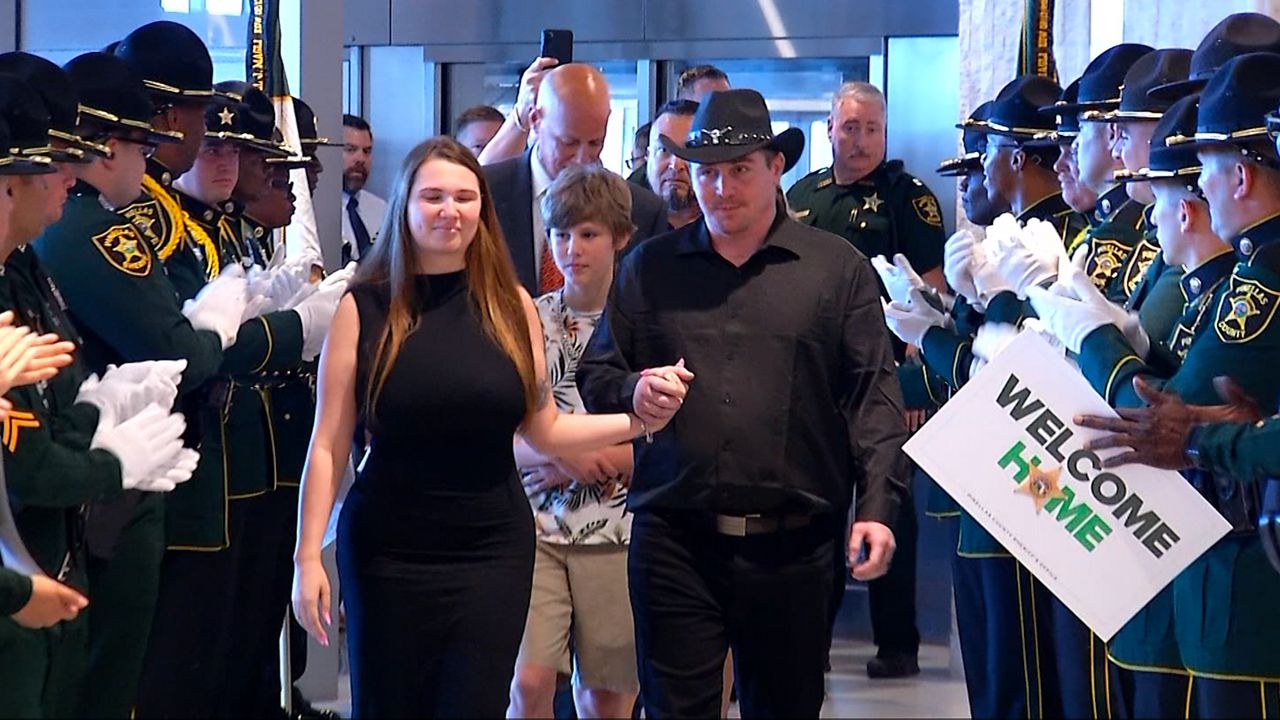BARTOW, Fla. — The Tampa Bay area is full of rich Black history, but in some cases a lot of it is buried.
During a recent project for a cemetery dedication, researchers at the Polk County History Center discovered a talented musician, Moses Williams, was buried at Shady Oaks Gardens in Bartow.
Lyrics written by Williams will now be permanently displayed on a new historic marker at the cemetery to commemorate the one-string guitar player who made a name for himself in Polk County.
Folklorist Dwight Devane has dedicated years to studying the musician’s life and impact on the region.
Williams was born Feb. 15, 1919, in Itta Bena, Miss. At the age of 11, he learned how to play the harmonica, but it was his one-string zither, or "diddley bow," that made him unique, Devane said.
It earned him nicknames like "Broom Wire Slim" and "Doorman," he said. Devane said he has worked hard to make sure Williams’ story is told.
“I came across Moses in Haines City after I heard children talking about a music man who played for them on their way to school in exchange for their sandwiches and candy,” Devane said.
That was decades ago and years before Williams was buried at Shady Oaks Garden Cemetery — a place referred to by many as a pauper’s cemetery.
Devane said he paid for Williams' headstone.
“Moses Doorman Williams. 1919 to 1988. Blues musician. Master of the one-string guitar,” Devane said, reading from the headstone.
And while Williams is now honored at the cemetery in death, Devane said it’s what he did when he lived that helps tell the story of an entire region.
“The underpinning for all folklore is anthropology," Devane said. "So, we look at how traditions operate and how it is they still have value and meaning."
Devane got to see just how meaningful Williams’ music was when he first visited the musician at his home years ago.
“I went inside and I saw what his instrument was, but I couldn’t believe it,” he said. “It was tacked up on the wall, inside the wall of his living room, in this pretty bare little house. But the entire wall was his sounding board.
"And as other folklorists have had this experience of where this is being played, almost the whole house would vibrate.”
Devane said that wasn’t the only creative way Williams played his music.
In several pictures, Williams is shown using what’s often described as a "diddley bow," "jitter bug" or one-string guitar. It’s made from discarded wire connected to a piece of wood with a can at the top and a bottle at the bottom. Williams used a bottle to slide up and down the wire to make music.
“Many times, as we know in music, there are incredible musicians that never get their due that should," Devane said. "And Moses really didn’t get recognition. The couple of times I took him to festivals, there was a lot of excitement among people that weren’t a part of this community. But it was only for a fleeting day, and the rest of the time he would go back into his world."
It's a world where Devane got to see Williams celebrated.
“He drew so much attention to these kids that he would provoke them to dance and they would, of course, give him tips — many times food or give him a little bit of change," Devane said. "And they would follow him around. So it was not hard to see that he had value in the community."









